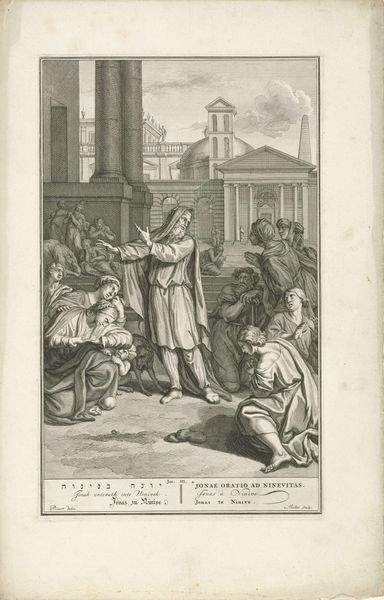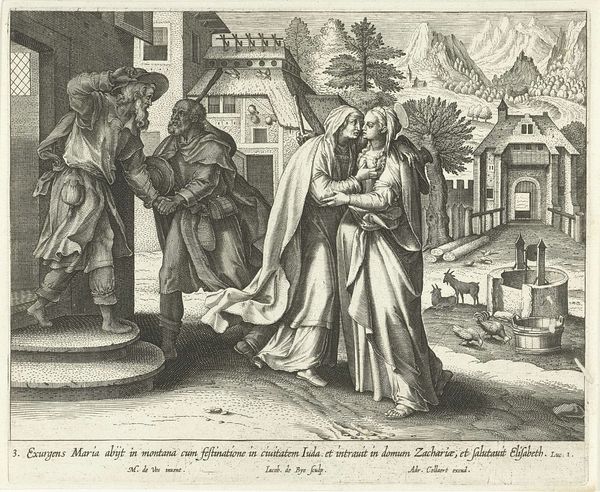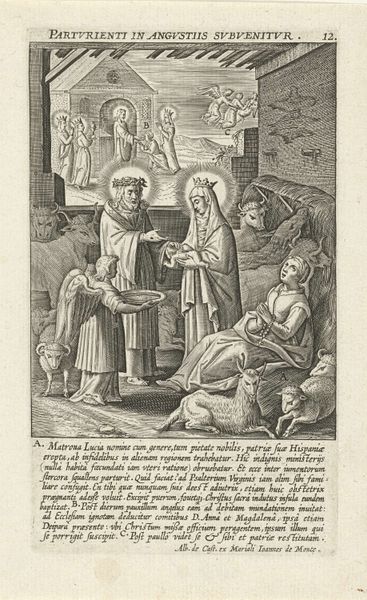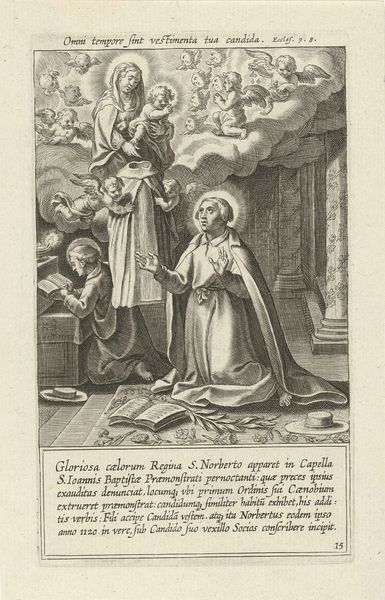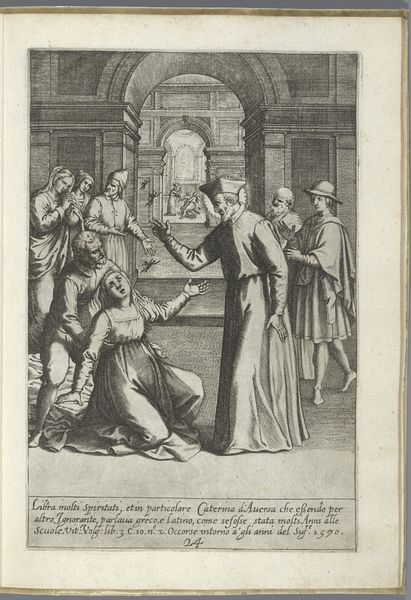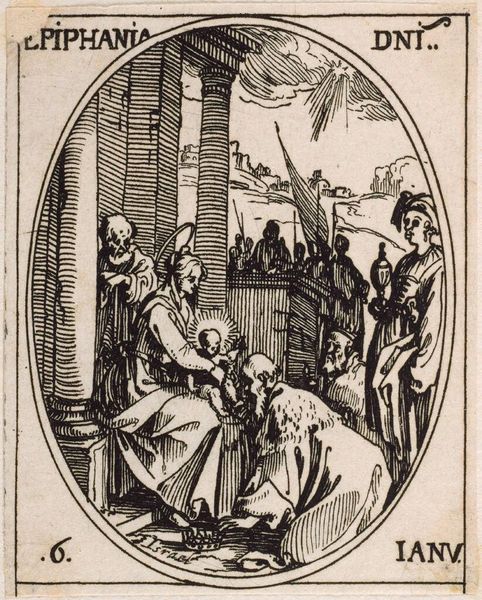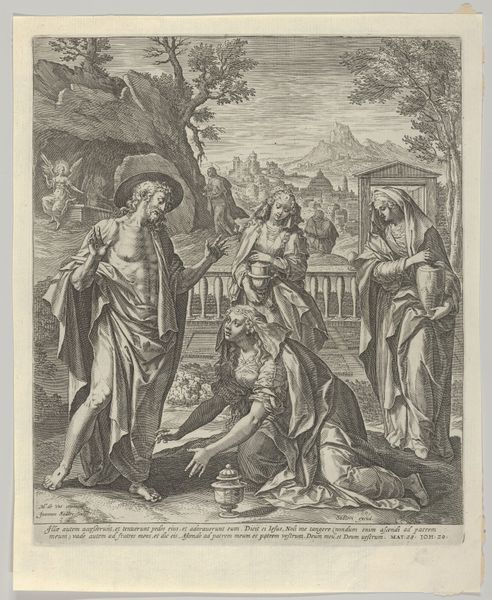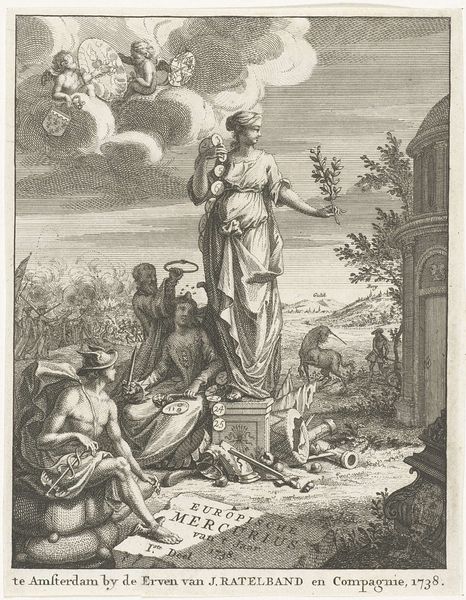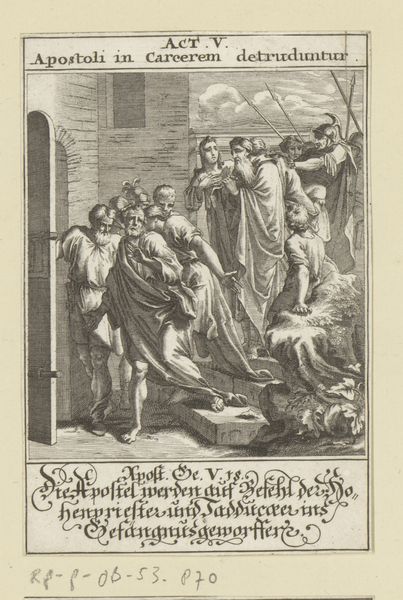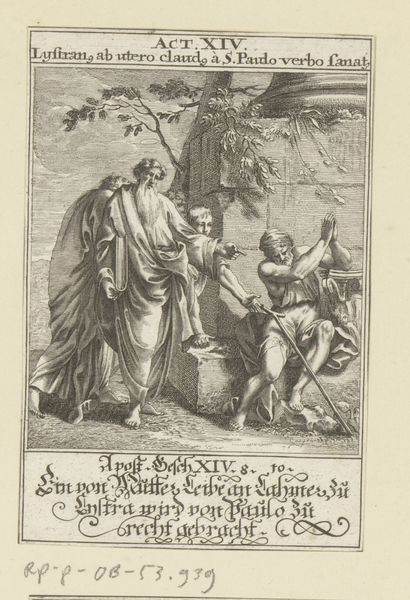
print, engraving
#
narrative-art
# print
#
figuration
#
11_renaissance
#
history-painting
#
northern-renaissance
#
engraving
Dimensions: height 107 mm, width 92 mm
Copyright: Rijks Museum: Open Domain
Editor: This is "Visitatie," an engraving made sometime between 1580 and 1600 by Jacob de Weert. The texture created by the engraving is fascinating, and I’m really struck by the dynamism despite the stillness of the scene. What jumps out at you in terms of its formal elements? Curator: Immediately, the deliberate orchestration of light and shadow commands attention, wouldn't you agree? Observe how de Weert utilizes cross-hatching to delineate form, modulating from areas of near-total darkness to surfaces rendered in stark relief. This treatment of light not only imparts a sculptural quality to the figures, but also serves to activate the pictorial space, creating a palpable sense of depth and volume. How do the architectural elements function? Editor: I see, the architectural lines kind of intersect with the figural arrangement which creates a bit of depth. It draws the eye from foreground to background. But the landscape itself almost feels flat because of the engraving technique; the depth is there but also feels somewhat lacking. Curator: Precisely. Note how the controlled deployment of line not only defines contours but also serves to differentiate textures – the rough-hewn stone of the building, for example, versus the soft folds of drapery. This speaks to the artist's technical virtuosity, his mastery over the medium. Editor: So, would you say the focus on the interplay of light and texture overrides any deeper narrative purpose? Curator: One must appreciate the artist's formal sophistication. The work shows a remarkable sensitivity to the inherent properties of the engraved line, elevates it beyond mere representational function. I do think looking at these qualities of the line can lead to insights, yes? Editor: Absolutely, I was focusing so much on what I thought it depicted and missing the core construction of the artwork! Thanks for pointing that out!
Comments
No comments
Be the first to comment and join the conversation on the ultimate creative platform.
